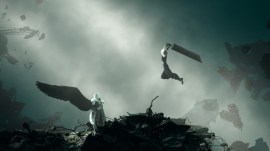Disney Illusion Island review: Mickey Metroidvania
A kid-friendly platformer, for better and worse
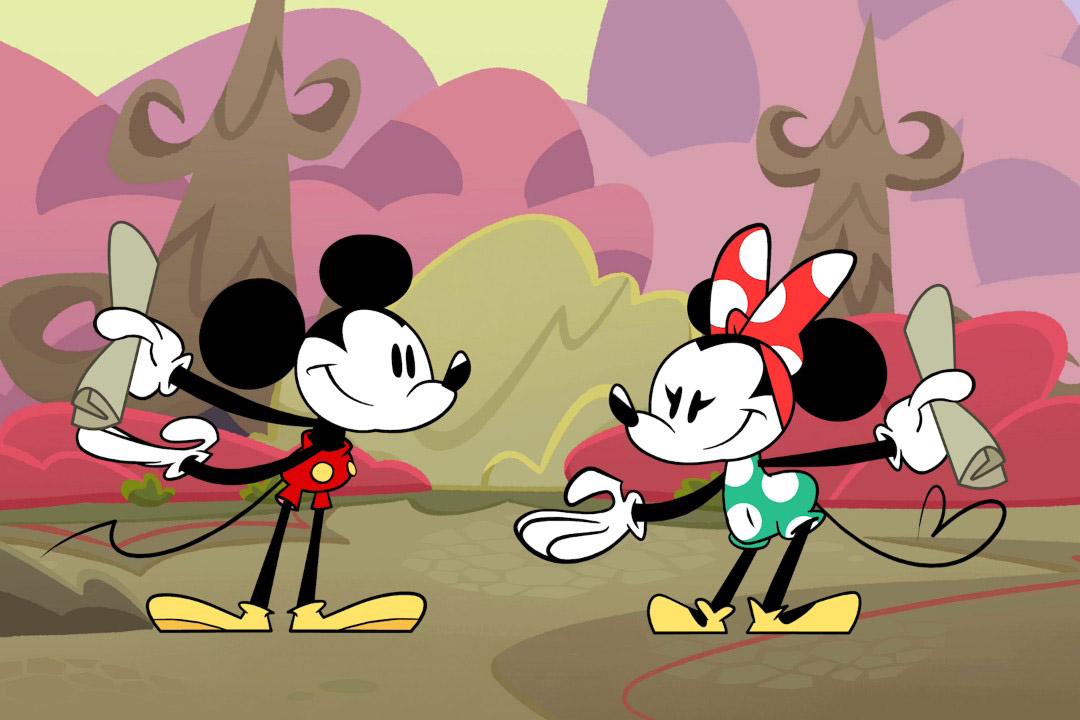
90s kids will recall that 2D platfomers weren’t just dominated by Mario and Sonic, but also the world’s most recognisable mascot: Mickey Mouse. Castle of Illusion and World of Illusion were an example of licensing done right, and the series is now making a return just in time for the House of Mouse’s 100th anniversary. Only Disney Illusion Island is no straight reboot.
Instead, this new spin swaps straightforward platforming for Metroidvania-esque exploration, where Mickey, Minnie, Donald and Goofy explore an interconnected map which gradually opens up as you acquire new abilities. Does it manage to capture the nostalgia of the original Illusion games and stand out in the genre, or is its spell short lived?
Taking the Mickey

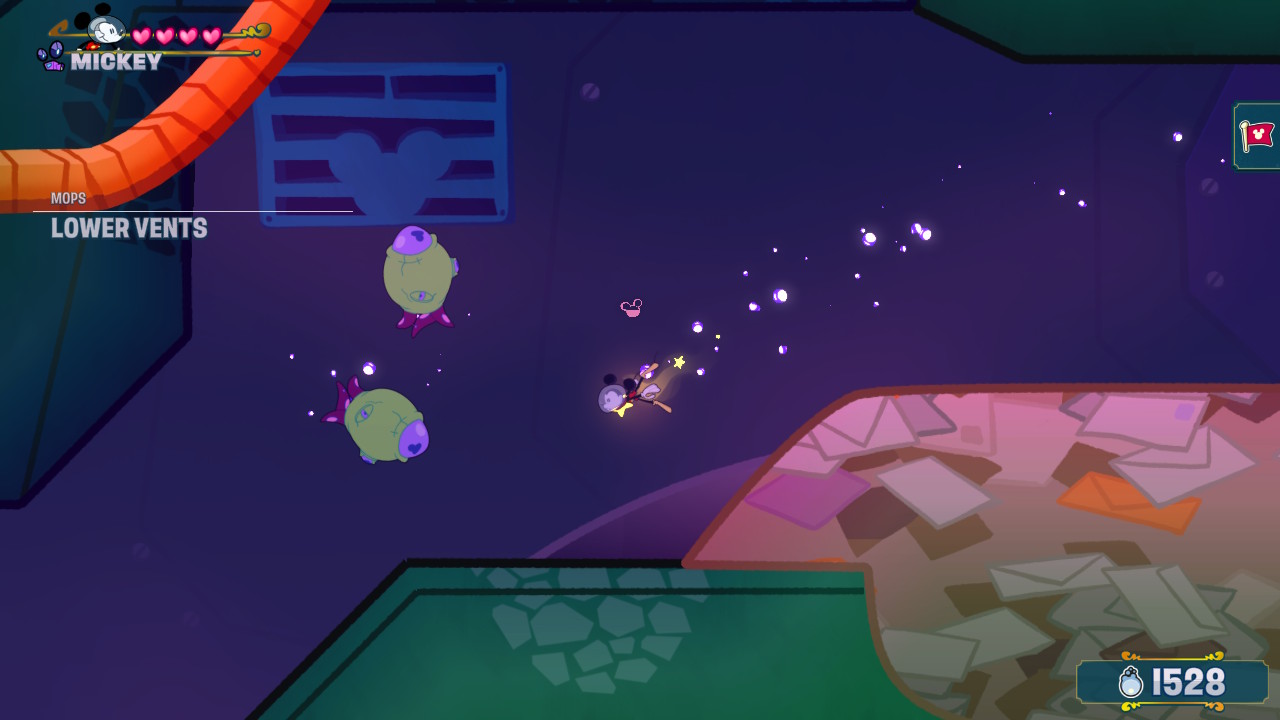
The most eye-catching thing about Disney Illusion Island is its hand-drawn art style, similar to current Disney+ series The Wonderful World of Mickey Mouse, which in turn takes inspiration from the classic look of the characters, but still feels distinct for the game. During cutscenes, we’re also treated to Mickey, Minnie, Donald and Goofy being voiced by the same current voice actors, so it does feel as if you are watching a real cartoon show where these heroes are tasked with saving the world of Monoth by retrieving three stolen magical books.
That said, when playing the game some of this characterful charm gets lost because very often the camera is zoomed out so that you have to squint to really make out the lovingly detailed animations. It also results in highlighting how bland its background environments fare in comparison. You might call it an artistic choice but it’s just a far cry from say the very busy background visuals of Cuphead or even World of Illusion’s colourful backdrops. When you’re also traversing one large map, there’s almost a lack of distinction between biomes, which can also be said about the music, which while pleasant enough rarely stirs the imagination.
Still, the biggest appeal for Disney Illusion Island is being able to play as all four of these iconic characters together, which makes it great for families of different abilities, with plenty of accessibility options that cater to each player, whether you require more health points or assist with platforming.
It’s also family-friendly in the sense that this is a cartoon platformer that features no direct violent interactions, which is pretty commendable. Your characters may still get hit by envionmental hazards and running into enemies and their projectiles but you don’t dish out damage yourself, while even the boss fights are more about platforming before our heroes cast a spell to freeze them in place.
Baby’s first Metroidvania
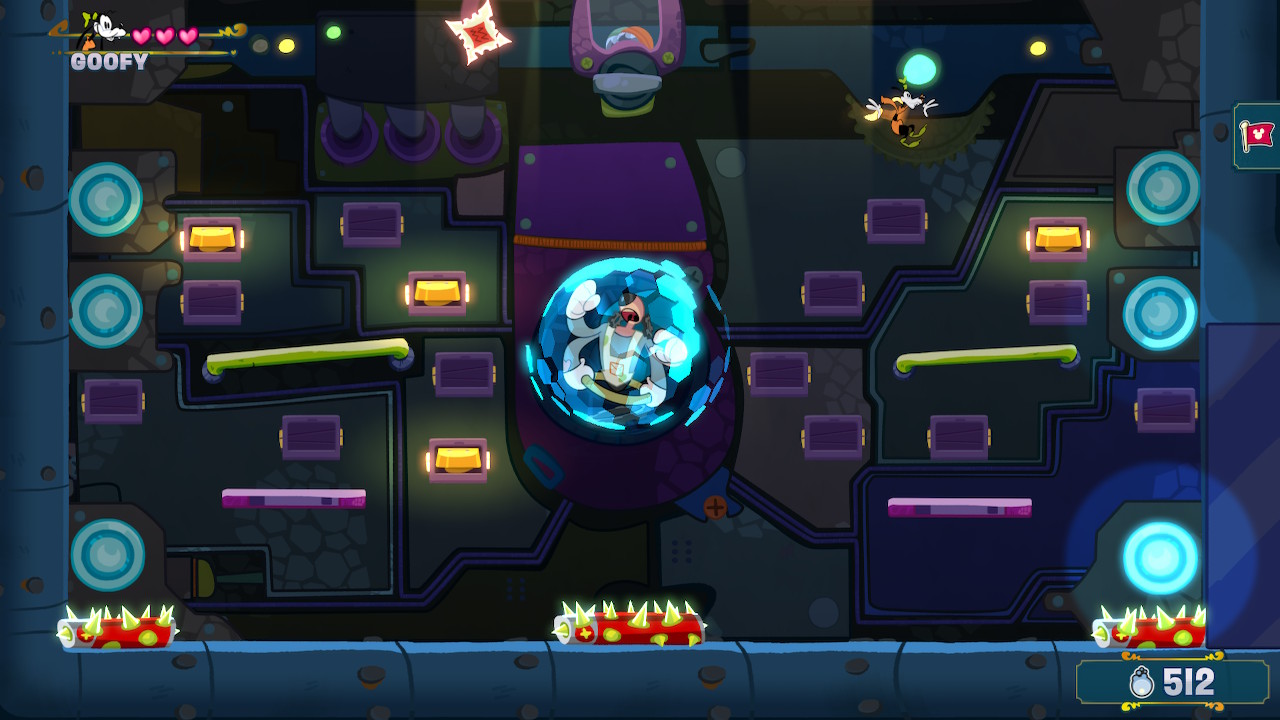
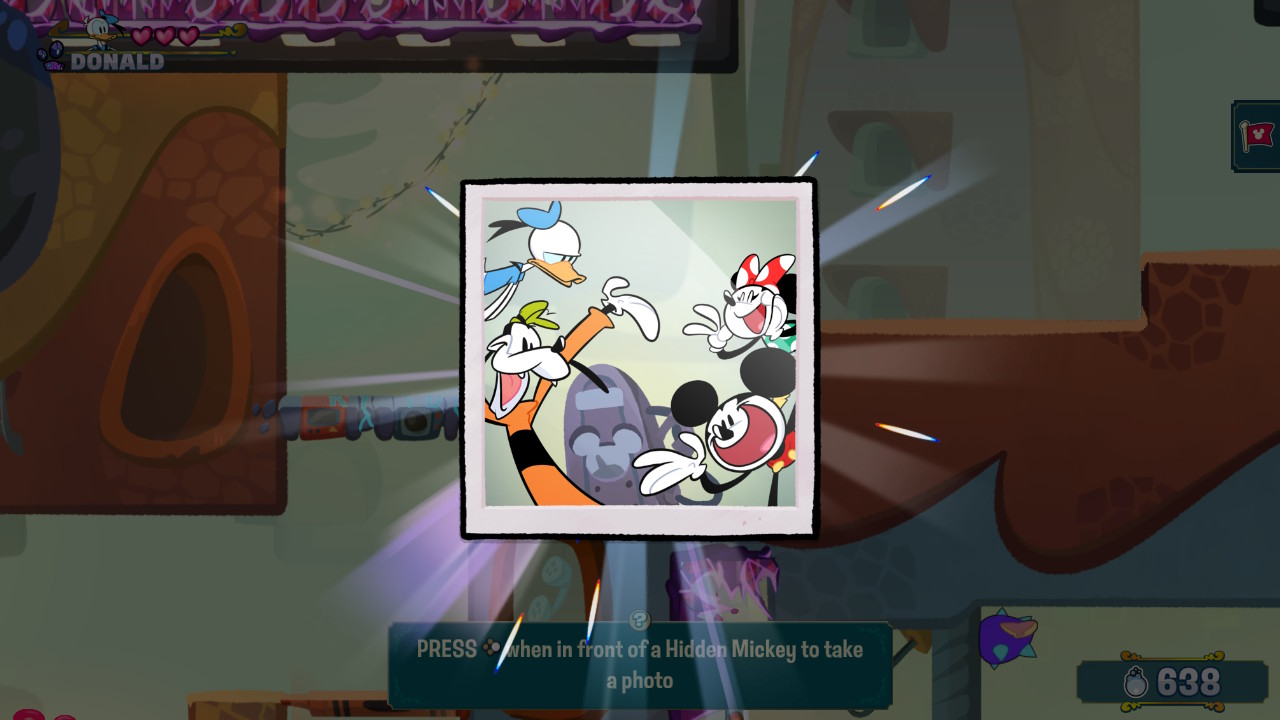
For solo players who are also well-versed in both platformers and Metroidvanias, beyond the aesthetic, Disney Illusion Island is however too simple to a fault. The game is developed by Dlala Studios, previously known for rebooting Battletoads, which had also toned down its originally fiendish difficulty. Given how retrospectively unforgiving classic Disney games also used to be, we can appreciate there’s probably a similar intent when it came to reviving the Illusion series.
The problem is that the action is so frictionless to the point that there’s very little that gets the blood pumping especially when compared to so many other examples in the genre, such as Hollow Knight and Ori and the Will of the Wisps. Sure, you could set it so that your character dies in one hit, but then all that does is just making the game more annoying. We should stress that difficulty does not necessarily make a game good, but then the interactions and mechanics should at least still be inventive and engaging.
Mickey and friends unlock new abilities over time, and while no character has any unique abilities, they do animate differently. For instance, for gliding, Mickey has a propeller on his tail, whereas Minnie descends with a mini polka-dot parasol, Goofy squeezes a huge bottle of mustard, and Donald (the butt of a recurring joke) flaps a pair of feathers.
The thing is double-jumps, wall-jumps, ground pounds, we’ve seen this all before in countless other platformers, and they’re things that by the point you should just expect as a given rather than a new power you need to unlock. That in itself also feels arbitrary as your heroes are granted a new ability each time they run into a pink creature and inventor called Mazzy. It becomes more a case of when you’re going to unlock a new ability that’s been signposted to you earlier but without offering something unexpected that significantly changes how you traverse the world.
Under no illusion
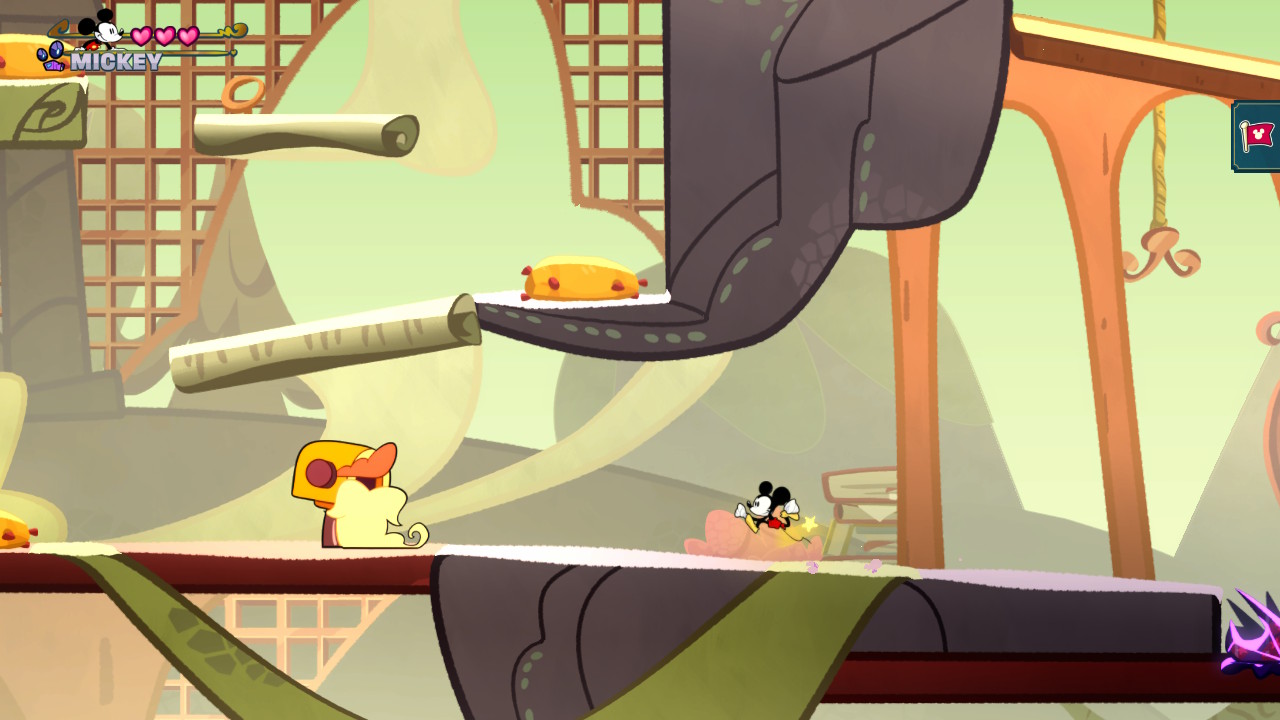
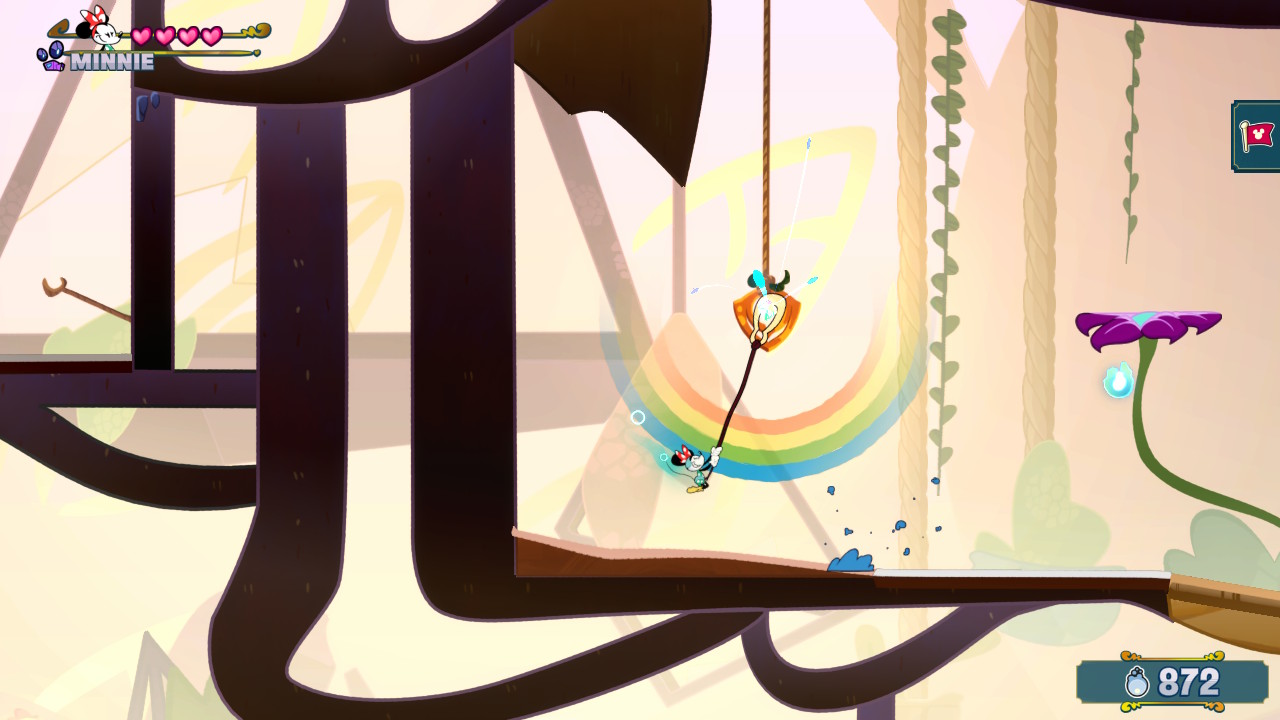
The lack of challenge means Disney Illusion Island’s large maps can feel like a slog where there’s little to differentiate one room from the next, though with so many checkpoints through it does mean you don’t have to repeat an area on the rare occasion you happen to lose all your hearts.
While other platformers and Metroidvanias tend to give you optional and more challenging routes that reward you with collectibles or upgrades, it all feels like a bit of an afterthought here. That said, Disney fans with an interest in Mickey’s back catalogue may find some appeal with unlocking memorabilia related to the many shorts the mouse has starred in across the company’s century. But as a single illustration in a menu you can’t even zoom in on, it exudes something of a ‘will this do’ energy.
It’s only on rare occasions, such as one area where you have to light up platforms in a particular order or in the room-scale boss fights that do try to test your platforming skills to some extent. Indeed, it’s the bosses where extra numbers in multiplayer can be useful since these you can have everyone spread out running and jumping for different placed targets.
Otherwise, co-op, while nice to have in a family gathering, lacks any meaningful difference that was in the two-player version of World of Illusion, for instance. It’s really just a case of following the host player around and if anyone falls behind, they’ll just magically get transported back onscreen in a matter of seconds. You can however heal teammates by hugging one another, so that’s certainly a wholesome addition.
Disney Illusion Island verdict

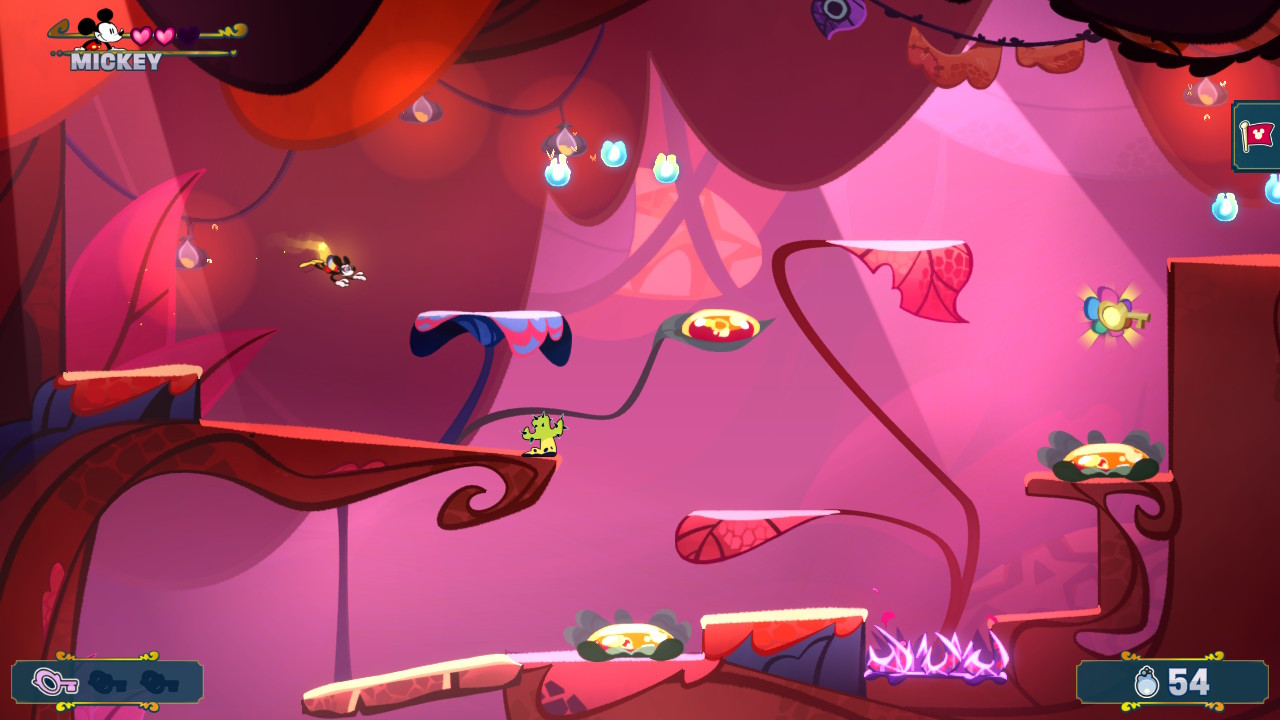
We hate to be all grumpy about what is essentially a game released to celebrate 100 years of Disney, and one that’s clearly been designed to be enjoyed by families who just want to play together with relatively low stress. Because if that’s your bag, then by all means, you’ll have a nice time with Disney Illusion Island for the 6 hours the campaign takes to complete, and a bit more if you decide to collect everything.
However, if you’re a veteran of platformers and Metroidvanias, especially given the latter’s reputation for being challenging, then traipsing around Monoth is going to feel like a snooze fest where even the authentic and charming animation of its timeless characters is barely enough to carry it. It’s certainly an interesting example of a classic game that doesn’t have to rely on violent interactions, but then it doesn’t do enough to find the fun elsewhere.
Stuff Says…
A family-friendly Metroidvania, but its charm isn’t enough to make up for forgettable platforming and lack of challenge
Good Stuff
Well-animated characters
Non-violent game mechanics
Interesting bosses
Bad Stuff
So frictionless that it feels forgettable
Uninteresting environments and far too zoomed out
Overly familiar mechanics without its own spin

